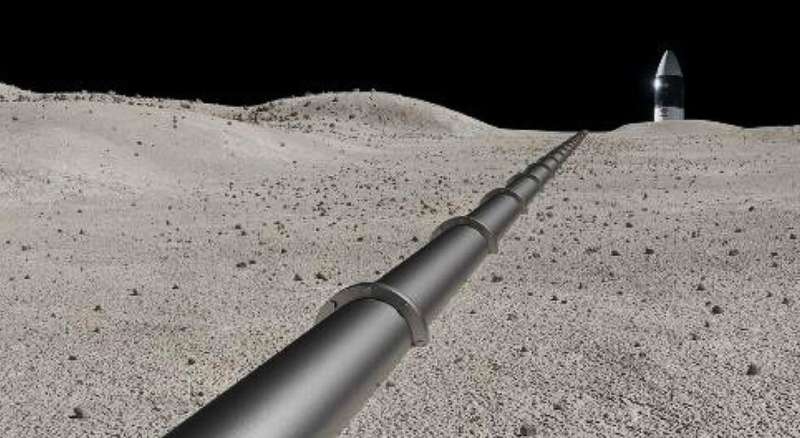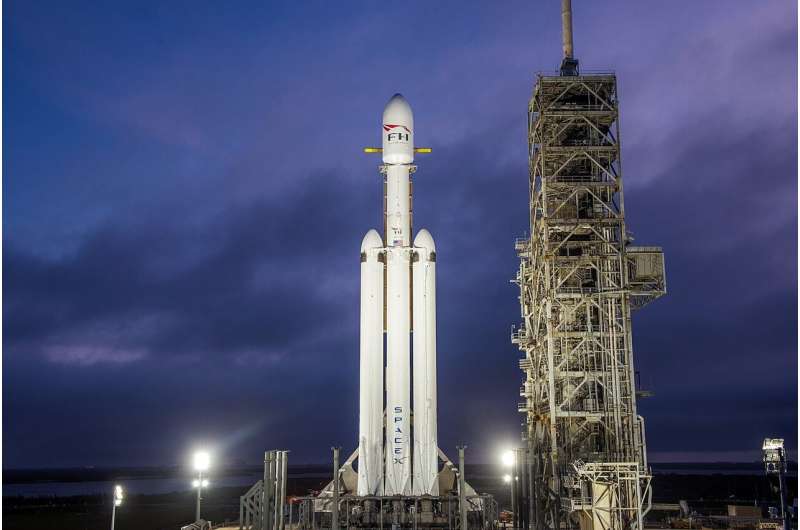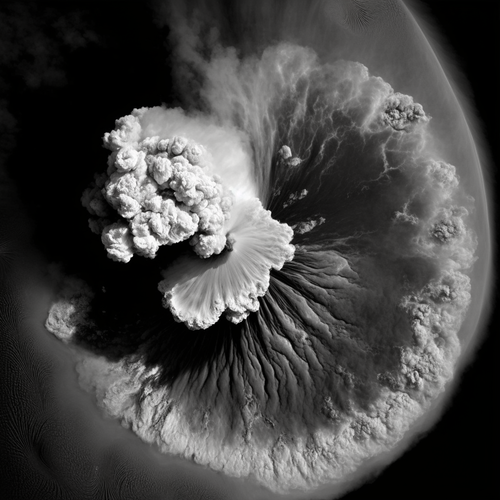
Copernical Team
China's space industry hits new heights
 China's space industry had a busy year in 2022, the highlight of which was completion of one of the world's largest and most sophisticated orbiting infrastructures, the Tiangong space station.
After traveling for 15 months in low orbit, about 400 kilometers above the Earth, Tianhe, the space station's core module, received its first long-term companion - the Wentian lab module - in late Ju
China's space industry had a busy year in 2022, the highlight of which was completion of one of the world's largest and most sophisticated orbiting infrastructures, the Tiangong space station.
After traveling for 15 months in low orbit, about 400 kilometers above the Earth, Tianhe, the space station's core module, received its first long-term companion - the Wentian lab module - in late Ju Eavesdropping on the Earth itself
 The more-than 1.2 million km of fibre-optic cables that criss-cross the planet carry the world's phone calls, internet signals and data. But this summer, researchers published the eerie sounds of blue and fin whales detected by a fibre-optic cable on the west coast of Svalbard - a first.
Now the researchers want to eavesdrop on an even larger beast - the Earth itself.
Combining the w
The more-than 1.2 million km of fibre-optic cables that criss-cross the planet carry the world's phone calls, internet signals and data. But this summer, researchers published the eerie sounds of blue and fin whales detected by a fibre-optic cable on the west coast of Svalbard - a first.
Now the researchers want to eavesdrop on an even larger beast - the Earth itself.
Combining the w Sweden opens Mainland Europe's first spaceport
 Sweden on Friday inaugurated and officially opened Mainland Europe's first space facility for satellite launches.
Prime Minister Ulf Kristersson and Sweden's King Carl XVI Gustaf cut the ribbon in the city of Kiruna, around 25 miles from the new Spaceport Esrange.
The event was timed to coincide with Sweden taking over as the head of the Council of the European Union.
The
Sweden on Friday inaugurated and officially opened Mainland Europe's first space facility for satellite launches.
Prime Minister Ulf Kristersson and Sweden's King Carl XVI Gustaf cut the ribbon in the city of Kiruna, around 25 miles from the new Spaceport Esrange.
The event was timed to coincide with Sweden taking over as the head of the Council of the European Union.
The Capella Space raises $60M to expand satellite imaging capacity
 Capella Space, a leading American satellite manufacturer and Earth observation company, has closed $60 million in growth equity financing from the U.S. Innovative Technology Fund ("USIT"). Capella will leverage this growth capital to expand its imaging capacity and develop new data products as customer demand grows for its frequent, timely and high-quality SAR imagery and analytics capabilities.
Capella Space, a leading American satellite manufacturer and Earth observation company, has closed $60 million in growth equity financing from the U.S. Innovative Technology Fund ("USIT"). Capella will leverage this growth capital to expand its imaging capacity and develop new data products as customer demand grows for its frequent, timely and high-quality SAR imagery and analytics capabilities. One day, there could be a pipeline of oxygen flowing from the moon's south pole

The Artemis program intends to put humans on the moon for the first time since NASA's Apollo missions. But Artemis has a larger scope than just landing people there, setting up some science experiments, gathering moon rocks, playing a little golf, then leaving. The intent is to establish a consistent presence.
That will require resources, and one of those critical resources is oxygen.
Dr. Peter A. Curreri has been a NASA scientist for decades and has been a strong proponent of human spaceflight. Since 2021, Curreri's been the Chief Science Officer for Lunar Resources, Inc. Lunar Resources is proposing a novel concept for Artemis: an oxygen pipeline.
An ongoing human presence on Mars requires a few things to succeed, and the foundation of success is built on water and oxygen. The lunar south pole contains vast quantities of primordial water ice, frozen solid in the region's craters where sunlight never reaches it.
SpaceX sends up Falcon Heavy on sunset launch for Space Force

The winds died down for SpaceX as it queued up its rarely used Falcon Heavy right after sunset from the Space Coast on Sunday.
The fifth flight of the powerhouse rocket lifted off at 5:56 p.m. Eastern time from Kennedy Space Center's Launch Pad 39-A on a mission for the Space Force dubbed USSF-67. With winds over 20 mph gusting on Saturday across the region, the launch was pushed by a day.
But Sunday's skies were clear and calm so at liftoff, the rocket's plume lit up in glorious orange billows while creating a distant dark shadow slanting across the horizon.
The cheers of employees and their families on site were soon drowned out by the rumble of the 5.1 million pounds of thrust that tumbled across the space center, eventually dying away but not without setting off a few car alarms.
Falcon Heavy, which only falls second to NASA's Space Launch System in terms of most powerful active rockets, is essentially three Falcon 9s strapped together outfitted with 27 Merlin engines across the three first stages.
Looking back at the eruption that shook the world

One year ago, the Hunga Tonga-Hunga Ha’apai volcano erupted, causing widespread destruction to the Pacific Island Nation of Tonga, spewing volcanic material up to 58 km into the atmosphere. It brought a nearly 15 m tsunami that crashed ashore, destroying villages, and creating a sonic boom that rippled around the world – twice.
Satellites orbiting Earth scrambled to capture images and data of the aftermath of the disaster. Almost a year later, you can now listen to a sonification of the largest eruption of the 21st Century, created using wind data from ESA’s Aeolus mission.
US government examining over 500 'UFO' reports
 The US government is examining 510 UFO reports, over triple the number in its 2021 file, and while many were caused by drones or balloons, hundreds remain unexplained, according to a report released Thursday.
The 2022 report by the Director of National Intelligence (DNI) said that 247 "unidentified anomalous phenomena" or UAP reports have been filed with it since June 2021, when it revealed
The US government is examining 510 UFO reports, over triple the number in its 2021 file, and while many were caused by drones or balloons, hundreds remain unexplained, according to a report released Thursday.
The 2022 report by the Director of National Intelligence (DNI) said that 247 "unidentified anomalous phenomena" or UAP reports have been filed with it since June 2021, when it revealed Seven nations meet to address space security
 The Department of Defense participated in the annual Combined Space Operations (CSpO) Initiative Principals Board, hosted by the New Zealand Defense Force and New Zealand Ministry of Defense, December 6-8.
The annual event brought together counterparts from Australia, Canada, France, Germany, New Zealand, the United Kingdom, and the United States, with a focus on advancing collaboration an
The Department of Defense participated in the annual Combined Space Operations (CSpO) Initiative Principals Board, hosted by the New Zealand Defense Force and New Zealand Ministry of Defense, December 6-8.
The annual event brought together counterparts from Australia, Canada, France, Germany, New Zealand, the United Kingdom, and the United States, with a focus on advancing collaboration an SpaceX launches fifth Falcon Heavy mission, carrying military satellites
 SpaceX launched its fifth Falcon Heavy rocket mission, USSF-67, on Sunday from Florida's Kennedy Space Center.
The rocket made liftoff at 5:56 p.m. EST, with 5 million pounds of thrust.
The payload included two military satellite systems: the Continuous Broadcast Augmenting SATCOM and Long Duration Propulsive ESPA.
The first system is a geostationary relay satellite which
SpaceX launched its fifth Falcon Heavy rocket mission, USSF-67, on Sunday from Florida's Kennedy Space Center.
The rocket made liftoff at 5:56 p.m. EST, with 5 million pounds of thrust.
The payload included two military satellite systems: the Continuous Broadcast Augmenting SATCOM and Long Duration Propulsive ESPA.
The first system is a geostationary relay satellite which 
